Recent Posts
Trust SERVPRO of Carbondale-Marion to remediate mold
2/11/2025 (Permalink)
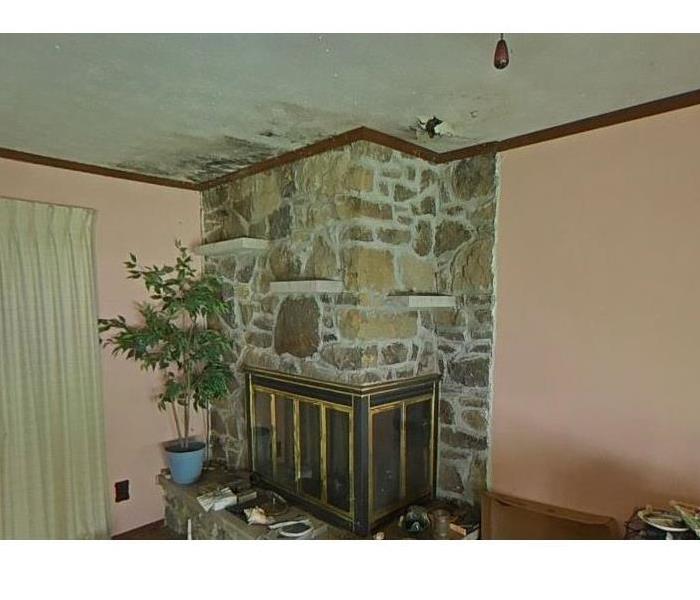 After this home was abandoned for decades, SERVPRO came in to remediate mold damage.
After this home was abandoned for decades, SERVPRO came in to remediate mold damage.
Mold can grow anywhere, but you can trust SERVPRO of Carbondale-Marion to effectively remediate the mold damage in your home or business.
But first you want to know, "Do I have a mold problem?"
With enough moisture, mold can begin showing up in just 24 to 72 hours. When you begin to see microbial growth in your home or business, it's natural to have a lot of questions regarding the remediation process.
That's where SERVPRO of Carbondale-Marion can help. We work with independent industrial hygienists to help you understand if you have a mold problem, and if you do, the extent of the situation. We can present you with a remediation plan, helping you understand the situation from start to finish.
If mold is found, SERVPRO works with you through the cleanup, repair, and remediation process with as little disruption as possible. Our technicians are trained and certified to give you peace of mind.
Call us today to learn more about how we can help you!
When it storms, call SERVPRO of Carbondale-Marion
1/2/2025 (Permalink)
 When winter weather strikes, SERVPRO of Carbondale-Marion is always here to help.
When winter weather strikes, SERVPRO of Carbondale-Marion is always here to help.
Whether it's a summer storm that blows a limb through your roof, flooding from a deluge of rain, or the freezing that comes every winter in Southern Illinois, SERVPRO of Carbondale-Marion is always ready to help you.
Our team of highly trained and certified professionals are available 24/7 for emergency services.
Floods. Tornadoes. Hail. Snow. Wind. Ice. Each natural disaster brings its own type of devastation and damage. SERVPRO’s storm damage clean-up experts are Faster to any size disaster™. Our proprietary cleaning solutions, advanced equipment, and decades of experience will help return your property to preloss condition.
We not only offer water mitigation services, but we can stabilize the building by tarping the roof and boarding up damaged areas. Once the cleanup is complete, we have a reconstruction team ready to put it all back together for you.
When you need help - no matter the season - SERVPRO of Carbondale-Marion will make it our mission to serve you.
When you suspect mold, call SERVPRO for help!
11/4/2024 (Permalink)
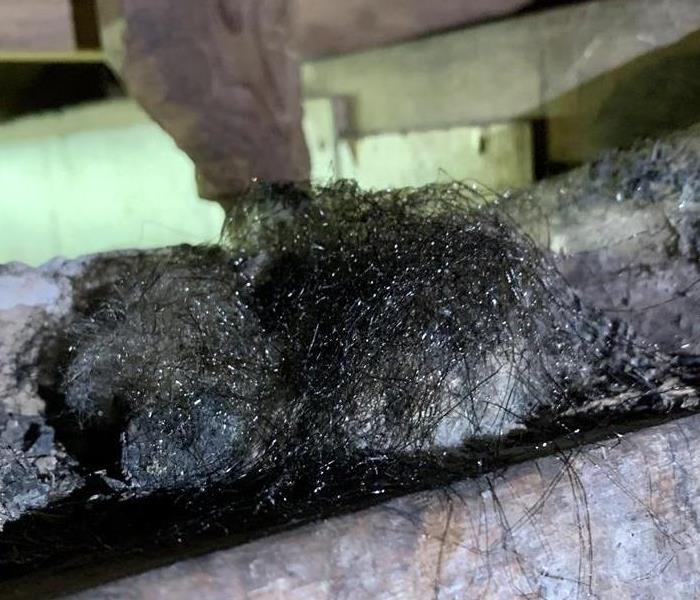 Mold growth can happen anywhere there is excessive moisture. When you suspect you have a problem like this, call our professionals for assistance.
Mold growth can happen anywhere there is excessive moisture. When you suspect you have a problem like this, call our professionals for assistance.
Mold can grow anywhere and on anything if there is enough moisture. This includes wood, paper, carpet, and even food.
If you suspect you have mold in your home, call the professionals at SERVPRO of Carbondale-Marion for information about our mold remediation services.
Our technicians will thoroughly assess and inspect your property for visible mold signs. They use various techniques to detect the presence of mold and possible hidden water sources. If mold is found, SERVPRO works with you through the cleanup, repair, and remediation process with as little disruption as possible.
Our technicians have the professional training and tools to remediate the presence of mold in your home or business.
Helping you is our Why
11/4/2024 (Permalink)
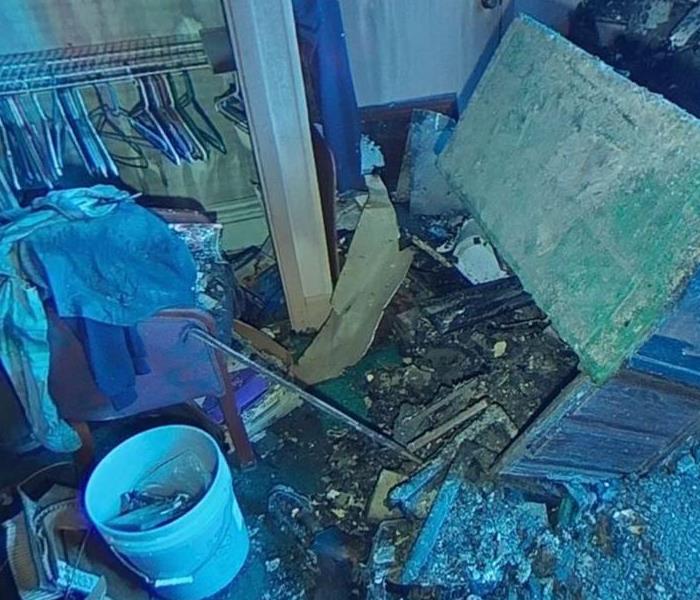 When a historic home was damaged by fire, SERVPRO was there to help the elderly homeowner recover from the loss.
When a historic home was damaged by fire, SERVPRO was there to help the elderly homeowner recover from the loss.
When you talk to the employees at SERVPRO of Carbondale-Marion, they will tell you our customers are why they do what they do.
You are our why. Helping you is always going to be our mission.
Customers come to SERVPRO of Carbondale-Marion on some of the worst days of their lives. Because we know this, our team is trained with empathy, understanding and professionalism. Our team knows how to restore your home or business after water, fire, mold, or sewage damage, but they also know the importance of kindness and helping you recover.
As one of our customers noted, "They were amazing to work with and treated you like family, they were always one call away to help us through a very difficult time."
As seasons change, SERVPRO of Carbondale-Marion is prepared to help with fire damage
9/9/2024 (Permalink)
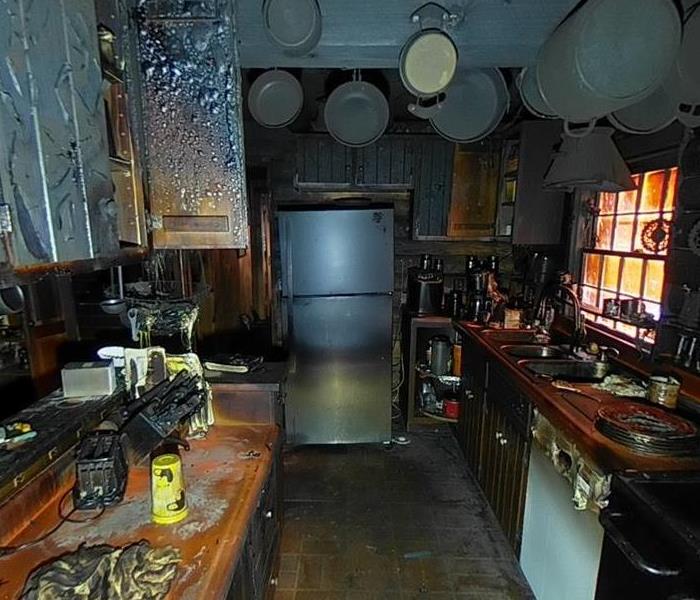 The kitchen of this log home sustained heavy fire damage. SERVPRO not only cleaned up the damage, but rebuilt the fire-damaged parts of the home.
The kitchen of this log home sustained heavy fire damage. SERVPRO not only cleaned up the damage, but rebuilt the fire-damaged parts of the home.
As the seasons begin to shift in Southern Illinois, the risk for fire damage increases in the Carbondale and Marion areas.
In 2022, Illinois fire departments were called to 1.4 million incidents that left 92 people dead and caused more than $476 million in property damage, according to the Office of the Illinois State Fire Marshal.
With that in mind, it's important to reduce the risk of fire as colder weather begins to creep into the Midwest.
To reduce risk, remember to:
- Turn off space heaters before falling asleep.
- Check space heaters for damaged cords or plugs.
- Plug space heaters directly into wall outlets.
In addition, overloading outlets, misusing extension cords, and using old or worn appliances and electrical cords can all increase the risk of fire.
When you're looking to protect yourself from the cold this winter, remember to also stay diligent in protecting yourself from the risk of fire.
If you do experience a fire in your home or business, you can trust the fire experts at SERVPRO of Carbondale-Marion for a comprehensive inspection to help you navigate the process.
Trust SERVPRO of Carbondale-Marion to assess and remediate mold
9/9/2024 (Permalink)
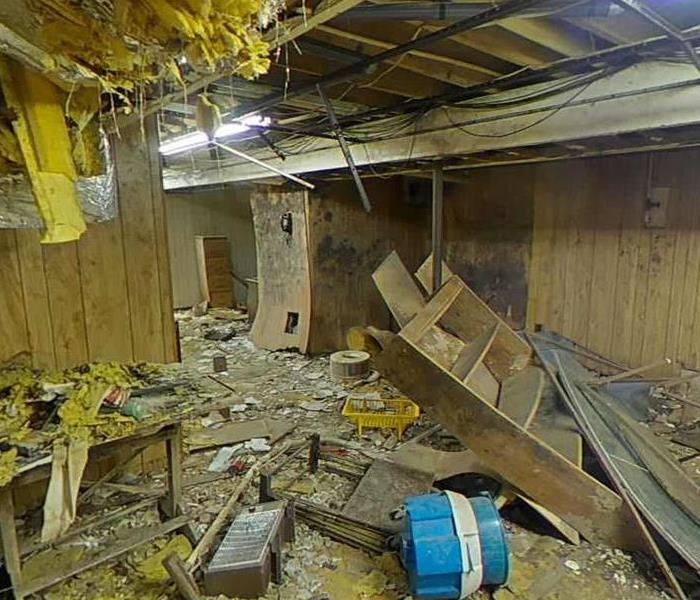 Before SERVPRO of Carbondale-Marion was called to remediate mold, this home was filled with microbial growth.
Before SERVPRO of Carbondale-Marion was called to remediate mold, this home was filled with microbial growth.
When you discover mold growth in your home or business, it’s important to take quick action because mold can spread quickly.
Our team in Southern Illinois is ready to respond when you suspect a mold problem to:
- Inspect the mold damage and provide an assessment,
- Contain the mold,
- Provide advanced air filtration technology
- Remediate the mold, and
- Offer reconstruction services to rebuild after the remediation is complete.
Mold can grow anywhere, and with enough moisture, it can make its appearance in your home or business in just 24 to 72 hours.
That's why it's important to trust SERVPRO of Carbondale-Marion when you suspect that you might have a mold issue.
SERVPRO of Carbondale-Marion has the resources and training to properly remediate mold. When in doubt, trust the local professionals.
Regular hot water heater maintenance can help avoid disaster
8/20/2024 (Permalink)
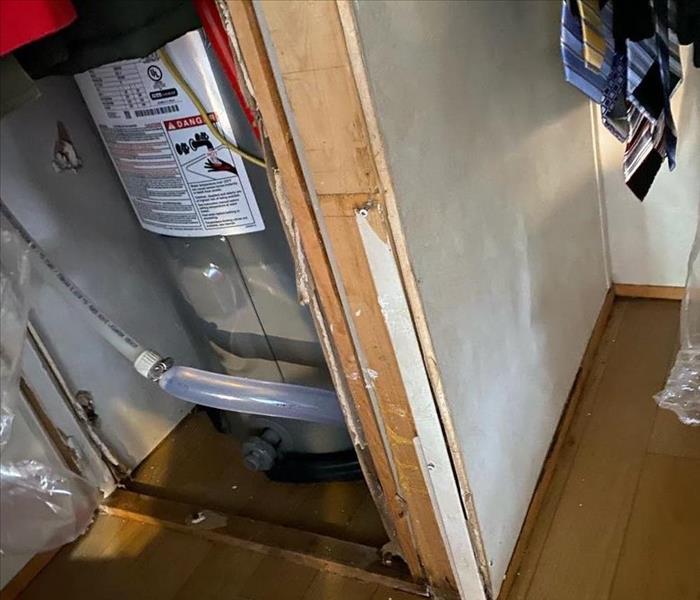 When a hot water heater malfunctions like this one did, SERVPRO of Carbondale-Marion can remediate the water damage.
When a hot water heater malfunctions like this one did, SERVPRO of Carbondale-Marion can remediate the water damage.
In nearly every home in Southern Illinois, you'll find a water heater tucked away, ready to provide warm water at a moment's notice. But, without notice, that convenient water heater can malfunction, spilling gallons of water in your home, creating a disaster.
When that happens, call the experts at SERVPRO of Carbondale-Marion and trust them to restore your property to preloss condition.
It's important to note that avoiding a water disaster can be as simple as monitoring your water heater and ensuring regular maintenance is performed.
When you notice water pooling around your hot water heater, do not delay repairs. Call a plumber to get the appliance repaired quickly and professionally. SERVPRO of Carbondale-Marion can remediate any water damage from the leak.
It's important not to ignore your water heater. Not only is it vital to your lifestyle, but it's a major source of energy consumption. Taking care of your hot water heater can save you time and money in the long run.
If you have problems with your hot water heater, you can trust the professionals at SERVPRO of Carbondale-Marion to provide an accurate inspection of the water damage, and if necessary, our team can provide services to resolve the water damage.
When Water Damage Occurs, Call the Experts at SERVPRO!
6/26/2024 (Permalink)
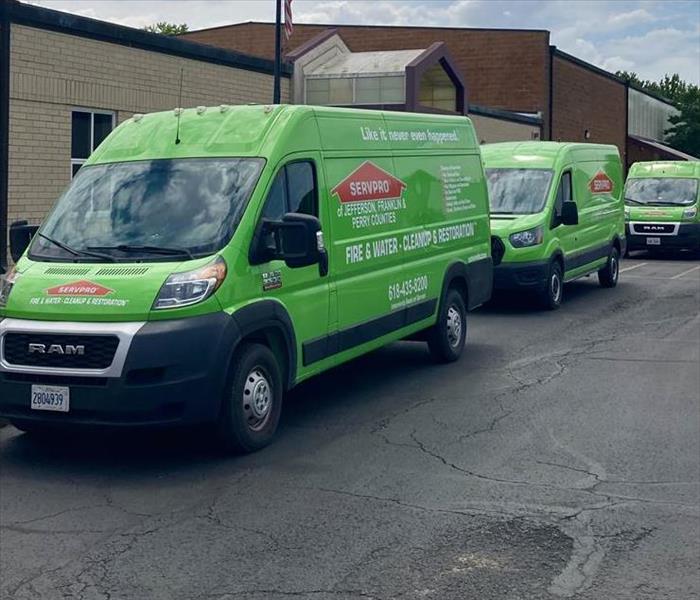 Our team on-site for an emergency water damage.
Our team on-site for an emergency water damage.
Water is one of the most destructive causes when it comes to home damage. In some cases, it can be going on for months or years before you even notice it. Water damage can cause structural issues to your home or business, as well as severe mold and air quality issues, along with other unwanted problems.
SERVPRO® carries the best equipment to help remove standing water as well as water trapped inside of walls. Calling SERVPRO immediately after noticing water damage can also help save hardwood floors from becoming too saturated with water for too long and warping.
Having essential equipment that can dry hardwood floors is one of many ways SERVPRO can help save on an insurance claim and help you to get your life back on track quickly!
If you have questions or concerns regarding water damage to your home or business, give the experts at SERVPRO of Carbondale/Marion a call at 618-998-8828!
Recovering From Flood Damage | SERVPRO of Carbondale/Marion
5/23/2024 (Permalink)
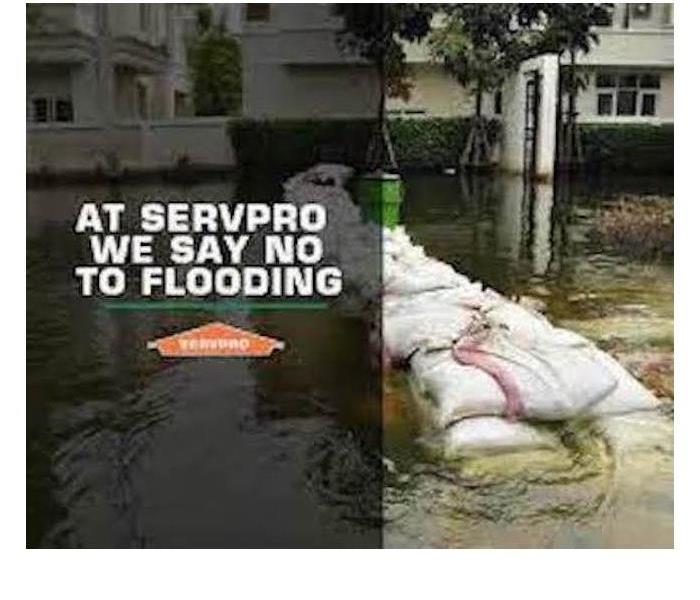 SERVPRO of Carbondale/Marion is here to help your home or business recover from flood damage
SERVPRO of Carbondale/Marion is here to help your home or business recover from flood damage
Floods can be devastating, leaving behind significant damage to homes and properties. In the aftermath of a flood, it's essential to prioritize safety and take appropriate steps to clean up and restore your property. As experts in flood damage restoration, we at SERVPRO of Carbondale/Marion understand the challenges homeowners and businesses face during this difficult time. In this comprehensive guide, we'll share valuable tips and insights on how to safely clean up after a flood, drawing from our experience and expertise in the field.
Safety FirstSafety should always be the top priority when dealing with flood cleanup efforts. Before you begin, it's crucial to assess potential hazards and take necessary precautions to protect yourself and your family. Here are some essential safety tips to keep in mind:
- Assess the Risk: Before entering the flooded area, assess the risk of electrical hazards, structural damage, and contamination. If there's a risk of electric shock, turn off the power supply to the affected area before entering.
- Wear Protective Gear: Remember to wear appropriate protective gear, including rubber gloves, rubber boots, and safety goggles, to protect yourself from exposure to contaminated water and debris.
- Avoid Contaminated Water: Floodwater can be contaminated with bacteria, chemicals, and other hazardous substances. Avoid direct contact with floodwater and wash your hands thoroughly with soap and clean water if you come into contact with it.
- Use Caution Around Debris: Be cautious when navigating through the flooded area, as debris and other objects may be submerged and pose tripping hazards.
- Seek Professional Help: If the damage is extensive or if you're unsure about how to safely proceed, seek professional assistance from a qualified flood damage restoration company like SERVPRO of Carbondale/Marion
Assessing the Damage
Once you've ensured your safety, the next step is to assess the extent of the damage caused by the flood. A thorough assessment will help you develop a plan for cleanup and restoration. Here's how to assess the damage effectively:
- Inspect the Structure: Carefully inspect the structure of your home, including walls, floors, ceilings, and foundation, for signs of damage such as cracks, warping, or shifting.
- Check Utilities: Inspect electrical, plumbing, and HVAC systems for damage. If you suspect any damage to these utilities, refrain from using them until they've been inspected and repaired by a qualified professional.
- Document the Damage: Take photographs and videos of the damage to document the extent of the flood damage for insurance purposes. Make a detailed inventory of damaged items and belongings.
Removing Water and Debris
Once you've assessed the damage, the next step is water damage restoration. Prompt removal of standing water is essential to prevent further damage and minimize the risk of mold growth. Here's how to safely remove water and debris:
- Use Pumps and Wet/Dry Vacuums: Use pumps, wet/dry vacuums, or buckets to remove standing water from the flooded area. Start by removing as much water as possible to speed up the drying process.
- Dispose of Debris: Remove debris, mud, and silt from the flooded area using shovels, rakes, and wheelbarrows. Dispose of debris properly according to local regulations.
- Clean and Sanitize: Thoroughly clean and sanitize the affected area to remove any remaining dirt, bacteria, and contaminants. Use disinfectants and cleaning solutions recommended for flood cleanup.
- Dry Thoroughly: Use fans, dehumidifiers, and open windows to facilitate drying and ventilation. Ensure that the affected area is completely dry to prevent mold growth and further damage.
Cleaning and Disinfecting
After removing water and debris, it's essential to clean and disinfect the affected area to eliminate bacteria, mold, and other contaminants. Here are some tips for cleaning and disinfecting after a flood:
- Clean Surfaces: Clean and scrub all surfaces, including walls, floors, and furniture, with soap and water to remove dirt and debris. Use brushes, mops, and sponges to scrub stubborn stains and residues.
- Disinfect: Use disinfectants and antimicrobial solutions to kill bacteria, mold, and other pathogens. Pay special attention to areas that came into contact with floodwater, such as floors, walls, and appliances.
- Launder Fabrics: Wash and disinfect clothing, bedding, and other fabric items that have been exposed to floodwater. Use hot water and laundry detergent to kill bacteria and remove contaminants.
- Clean HVAC Systems: Clean and disinfect HVAC systems, including air ducts, vents, and filters, to prevent the spread of mold and contaminants throughout the home.
- Clean and Sanitize Belongings: Clean and sanitize belongings, furniture, and household items that have been affected by floodwater. Use appropriate cleaning products and techniques for different materials.
Restoring and Repairing
Once the cleanup and disinfection process is complete, the next step is to restore and repair the damage caused by the flood. Depending on the extent of the damage, restoration may involve structural repairs, electrical work, and mold remediation. Here's how to restore and repair your home after a flood:
- Structural Repairs: Assess the structural integrity of your home and address any damage to walls, floors, ceilings, and foundation. Hire a qualified contractor to perform structural repairs as needed.
- Electrical Work: Have electrical systems inspected and repaired by a licensed electrician to ensure safety and compliance with building codes. Replace damaged wiring, outlets, and electrical appliances as needed.
- Mold Remediation: If mold is present in your home, hire a professional mold remediation company to safely remove and remediate mold growth. Mold can pose serious health risks and should be addressed promptly and thoroughly.
- Replace Damaged Items: Replace or repair damaged items and belongings that cannot be salvaged or restored. This may include furniture, appliances, flooring, and personal belongings.
Preventative Measures
After completing the cleanup and restoration process, it's important to take proactive measures to prevent future flooding and water damage. Here are some preventative measures you can take to protect your home:
- Install Flood Barriers: Consider installing flood barriers or flood gates to prevent water from entering your home during heavy rain or flooding events.
- Elevate Utilities: Elevate electrical panels, HVAC systems, and other utilities above potential flood levels to minimize damage in the event of a flood.
- Seal Cracks and Openings: Seal cracks and openings in your home's foundation, walls, and windows to prevent water infiltration during storms.
- Maintain Gutters and Drains: Keep gutters and downspouts clear of debris to ensure proper drainage away from your home. Maintain and clean storm drains to prevent backups and flooding.
- Invest in Flood Insurance: Consider purchasing flood insurance to protect your home and belongings in the event of a flood. Standard homeowners insurance policies typically do not cover flood damage.
Conclusion
Cleaning up after a flood can be a daunting and challenging task, but with the right knowledge and preparation, you can safely restore your home and protect your family's health and safety. By prioritizing safety, assessing the damage, removing water and debris, cleaning and disinfecting, restoring and repairing, and taking preventative measures, you can navigate the cleanup process effectively and minimize the risk of further damage. Remember, if you're unsure about how to safely proceed or if the damage is extensive, don't hesitate to seek professional assistance from a qualified flood damage restoration company like SERVPRO of Carbondale/Marion. We are here to help restore your home or business from flood damage.
A Comprehensive Approach to Fire Damage Restoration | SERVPRO of Carbondale/Marion
4/18/2024 (Permalink)
 Trust SERVPRO of Carbondale/Marion's comprehensive approach to fire damage restoration
Trust SERVPRO of Carbondale/Marion's comprehensive approach to fire damage restoration
In the wake of a fire damage event, the physical devastation left behind can be overwhelming. SERVPRO of Carbondale/Marion is here to help answer all of your concerns, rebuilding lives and restoring homes and businesses. With a diligent approach grounded in expertise and empathy, SERVPRO of Carbondale/Marion goes above and beyond to bring comfort and renewal to those affected by fire damage.
Understanding the Impact
Before diving into the fire damage restoration process, we recognize the profound impact that fire damage can have on individuals, families and businesses. It's not just about repairing structures; it's about healing hearts and minds. Thus, the first step is always to empathetically assess the situation, listening to the concerns and needs of the clients with compassion and understanding.
Swift Response and Assessment
Time is of the essence in fire damage restoration. With every passing moment, the damage can escalate, making restoration more challenging and costly. We understand this urgency and operate with efficiency and speed. Upon receiving a call for assistance, our team swiftly mobilizes, arriving at the site promptly to assess the extent of the damage. Utilizing advanced technology and years of expertise, we conduct a thorough evaluation, identifying not only visible damage but also potential hidden issues such as water damage from firefighting efforts or structural compromise.
Tailored Restoration Plan
Once the assessment is complete, a customized restoration plan tailored to the specific needs of the property and its occupants. This plan outlines the steps necessary to mitigate damage, salvage belongings, and restore the property to its pre-fire condition. Transparency is key, and clients are kept informed at every stage of the process, ensuring peace of mind amidst the chaos.
Comprehensive Cleanup and Restoration
With a clear plan in place, SERVPRO of Carbondale/Marion's team gets to work, employing state-of-the-art equipment and industry-best practices to execute the restoration process meticulously. From removing debris and soot to addressing water damage as well as smoke and odor removal, no detail is overlooked. Every surface is cleaned, every corner inspected, and every effort made to ensure thorough restoration.
Salvaging Belongings
One of the most heartbreaking aspects of fire damage is the loss of cherished belongings. Recognizing the sentimental value attached to these items, we employ specialized techniques and equipment to salvage and restore as much as we possibly can. Whether it's family heirlooms, photographs, or important documents, our team works tirelessly to bring these items back to life.
Reconstruction and Renovation
Once the cleanup and salvage efforts are complete, the focus shifts to reconstruction and renovation. Whether it's repairing structural damage, replacing flooring and drywall, or rebuilding entire sections of the property, our skilled employees approach each task with precision and care. The goal is not just to rebuild the physical structure but to restore a sense of normalcy and security to the lives of those affected.
Constant Communication and Support
Throughout the entire restoration process, SERVPRO of Carbondale/Marion's maintains open lines of communication with clients, providing regular updates on progress and addressing any concerns or questions that may arise. Our team understands the emotional toll of fire damage and strives to provide not just exceptional service, but genuine support and reassurance every step of the way.
Going Above and Beyond
What sets us apart is our unwavering commitment to excellence and our dedication to going above and beyond for our clients. From our rapid response times to our meticulous attention to detail, every aspect of our service is infused with a sense of compassion and professionalism.





 24/7 Emergency Service
24/7 Emergency Service









